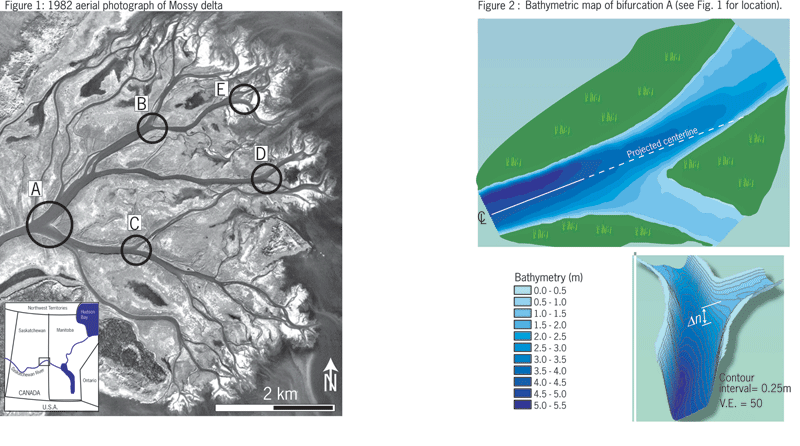
ACS PRF | ACS
All e-Annual Reports

45382-AC8
A Field and Numerical Study of the Morphology, Flow, Sedimentary Processes, and Stability of River-Channel Bifurcations
This study consists of a field and numerical investigation of the morphology, flow, and sedimentary processes of natural river-channel bifurcations in order to understand and predict their dynamical behavior. During the reporting period a research team consisting of two geosciences graduate students, an undergraduate geosciences major, and the PI collected field data for a month on channel bifurcations of the Mossy Delta (Fig. 1) in the
Preliminary results show that for four of five bifurcations, the wider bifurcate channel generally has discharge (Q) that is 13 to 28% less than the narrower bifurcate channel, cross-sectional mean velocity that is slower by a few percent, depth (d) that is shallower by half, water surface slope (S) that is steeper by a few percent, and higher dune height relative to water depth. Furthermore, a morphological ramp with slope from 0.1 to 1 degree leads from the deeper, undivided channel at the bifurcation point to the shallower channel. The origin of these geomorphic and hydraulic relationships remains an open question, and must await further investigation. However, relative values of S, Q, and d for the bifurcate channels in the Mossy River Delta are opposite the theory of Bolla-Pittaluga et al. (2003), in which bifurcations are stable if the bifurcate channel with the lower S has a smaller Q and d.
